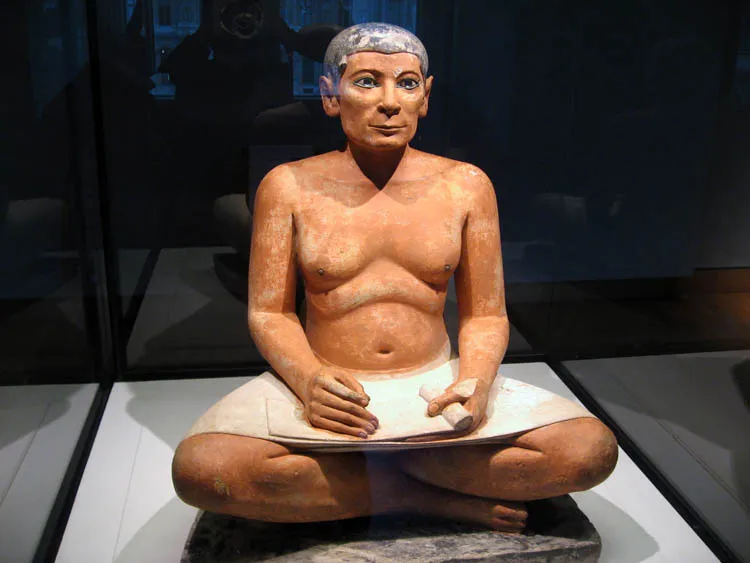The Seated Scribe: A Glimpse into Ancient Egyptian Life
The Seated Scribe, also known as the Squatting Scribe, is one of the most famous works of ancient Egyptian art. This limestone sculpture, created during the Old Kingdom (circa 2450–2325 BCE), was discovered at Saqqara in 1850. It now resides in the Louvre, where it continues to fascinate viewers with its lifelike detail and insight into the role of scribes in ancient Egypt.
Get your dose of History via Email
Discovery and Historical Context
French archaeologist Auguste Mariette discovered the Seated Scribe on November 19, 1850, at the Saqqara necropolis, north of the alley of sphinxes leading to the Serapeum. Unfortunately, the exact location of the find remains a mystery, as the original excavation journal has been lost. The sculpture was found near a tomb belonging to an official named Kai, and it is thought to date from the 4th or 5th Dynasty, around 2620–2500 BCE.
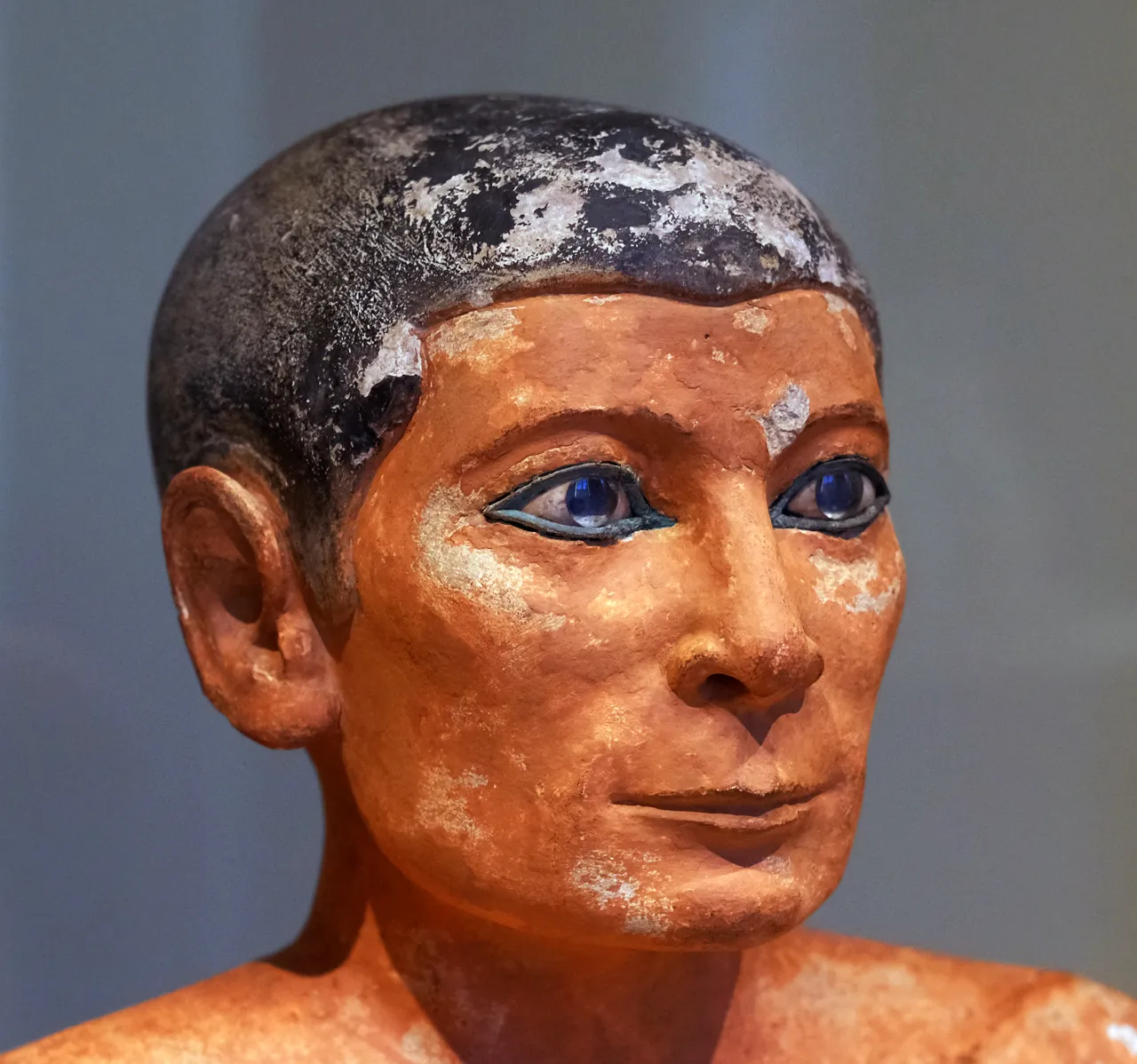
Scribes were a vital part of ancient Egyptian society, especially during the Old Kingdom. In a largely illiterate population, scribes were among the few who could read and write. Their work was essential for the functioning of the state—scribes recorded taxes, maintained records, and communicated orders from the rulers. The statue of the Seated Scribe likely served a dual purpose: both as a reminder of the scribe’s importance and as a means of ensuring his skills would serve his master in the afterlife.
A Masterpiece of Realism
One of the most striking aspects of the Seated Scribe is its remarkable realism. The figure, carved from painted limestone, sits cross-legged with a half-rolled papyrus scroll on his lap. His body, slightly overweight, indicates a life of comfort and status. Unlike the idealized, muscular forms of pharaohs and warriors, this scribe’s soft figure suggests he did not engage in physical labor, a sign of his elevated position in society.
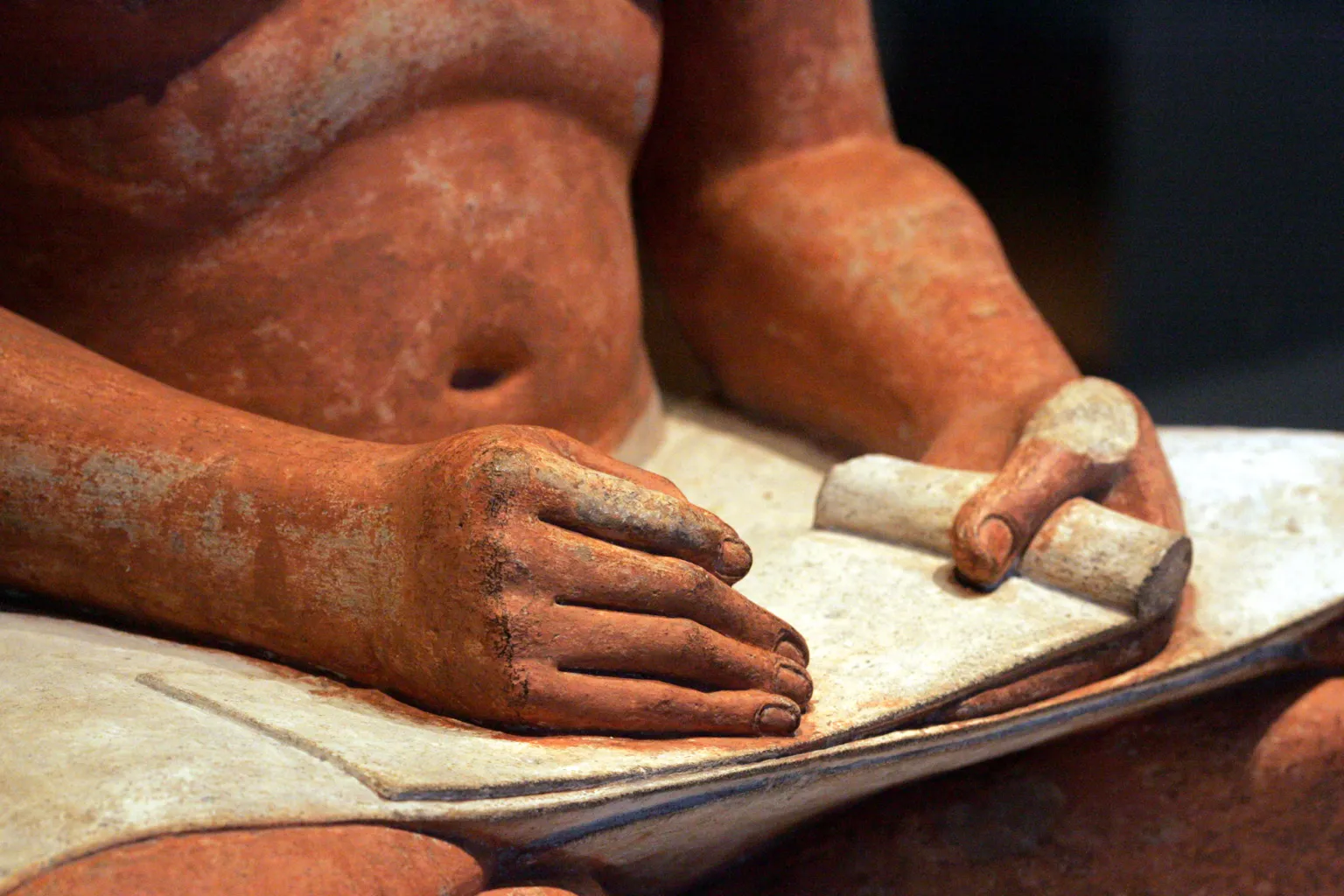
The figure wears a simple white kilt, typical of scribes, and is depicted in a natural writing posture, ready to record information. Both hands rest on his lap, with his right hand poised as if about to begin writing, though the reed-brush he would have used is missing.
The Face: A Window into the Soul
Perhaps the most captivating feature of the Seated Scribe is his face. His expression is calm and alert, as though waiting to begin recording the words of a speaker. The eyes, in particular, are meticulously crafted. They are inlaid with pieces of rock crystal and magnesite, held in place by copper clips. This attention to detail gives the eyes a lifelike quality, enhancing the sculpture’s sense of realism. The dark paint outlining the eyebrows further emphasizes the figure’s attentiveness, making him seem as though he is watching the viewer with keen focus.
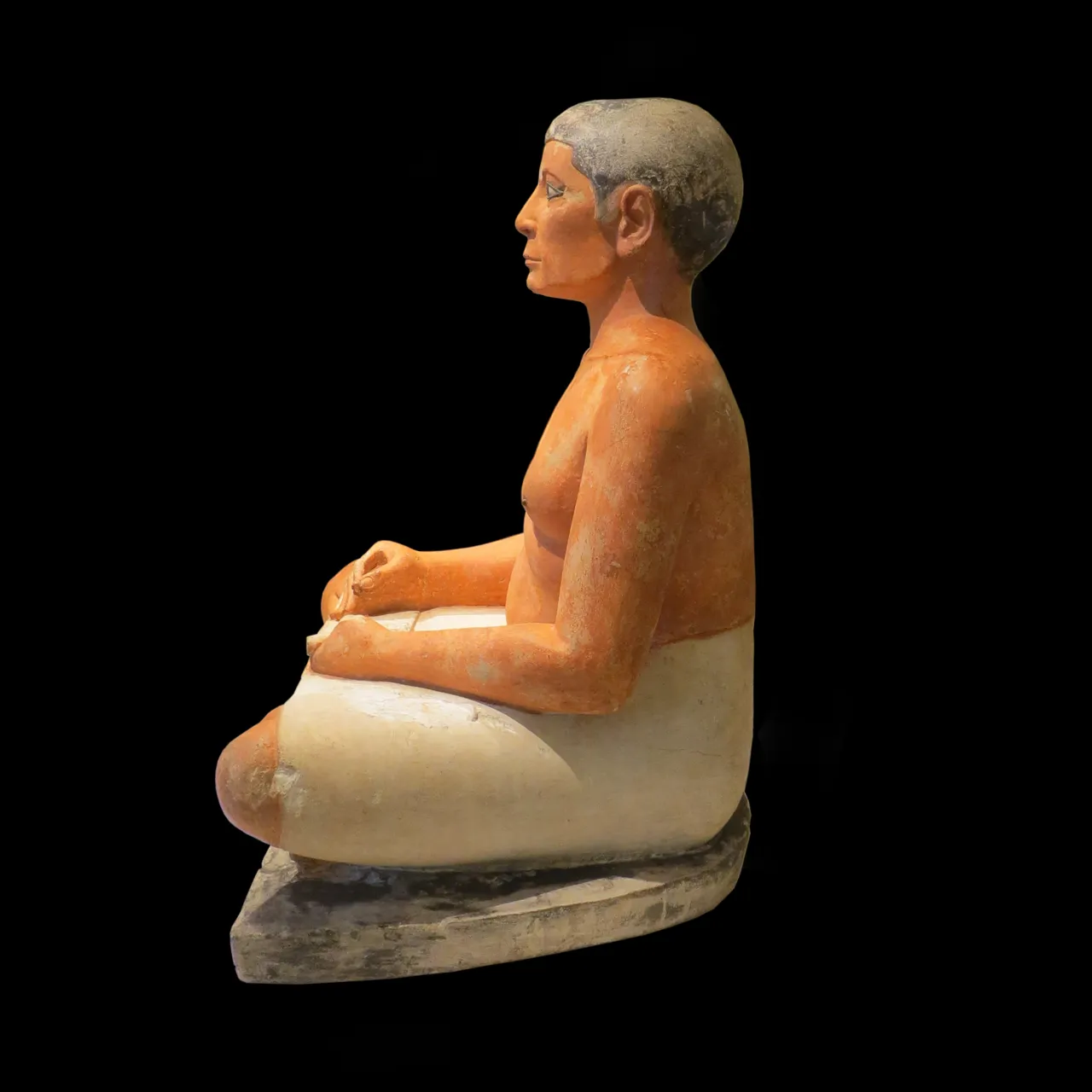
The Role of Scribes in Ancient Egypt
In ancient Egypt, scribes held a privileged position. They were among the few who could read and write, making them indispensable to the functioning of the state. Scribes were involved in nearly every aspect of daily life, from collecting taxes to overseeing large construction projects, such as pyramid building. They also helped maintain communication between the rulers and the people, ensuring that the administration ran smoothly.
The Seated Scribe reflects the esteem in which scribes were held. While most Egyptians were peasant farmers, scribes enjoyed a higher status, often depicted in art as important figures who contributed to the nation’s success. The lifelike depiction of the scribe underscores this importance, presenting him as a person of intellect and skill.
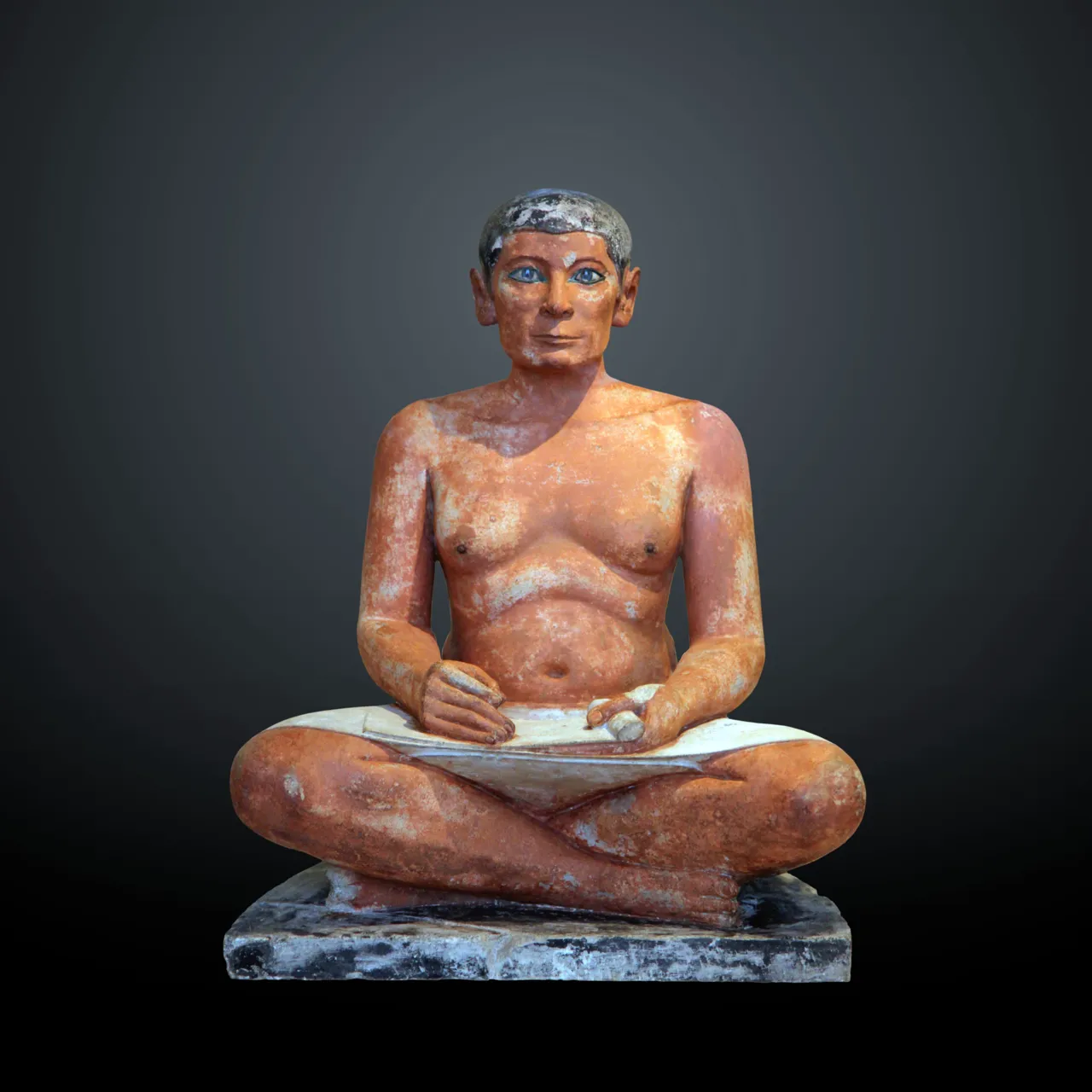
Mystery Surrounding the Scribe’s Identity
The identity of the figure represented by the Seated Scribe remains unknown. The statue’s base, which could have included the name and title of the scribe, was likely part of a larger block of stone that has since been lost. Scholars have speculated that the figure could be Pehernefer, a royal official, based on certain stylistic features like the scribe’s thin lips and broad chest. However, no definitive evidence supports this theory.
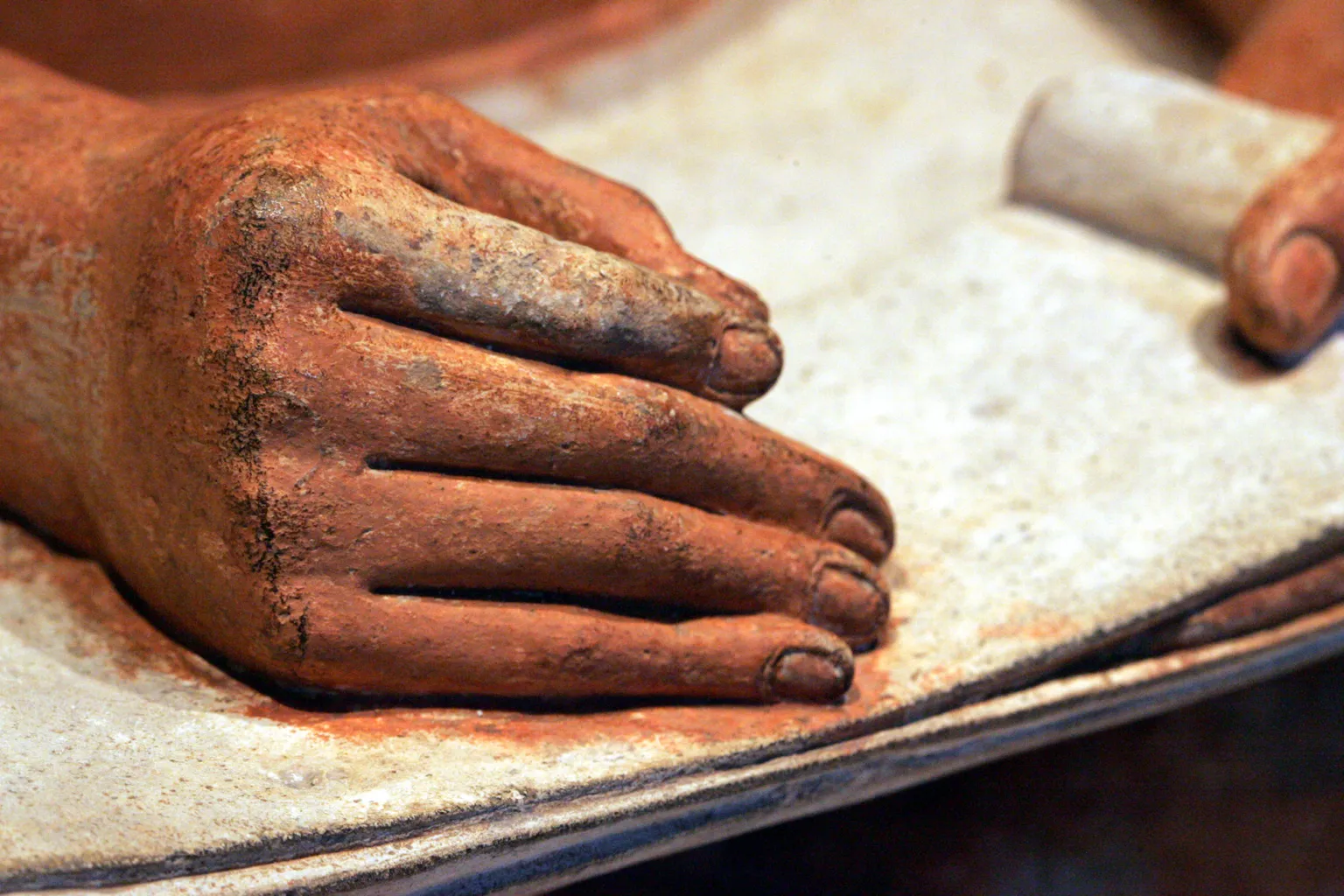
Conclusion: A Lasting Legacy
The Seated Scribe offers an extraordinary glimpse into the world of ancient Egypt. Through its masterful craftsmanship and lifelike detail, the sculpture embodies the essential role of scribes in a society that relied heavily on literacy for its governance. The calm yet attentive expression of the scribe invites viewers to engage with him, as though he is waiting to document their words.
Though his identity remains a mystery, the scribe’s legacy endures. As one of the most famous works of Egyptian art, the Seated Scribe continues to captivate audiences, serving as a timeless reminder of the skill and intellect required for this crucial role in ancient Egyptian civilization.
Sources:

